Category Archives: Uncategorized
PreSonus in the Windy City!
The Midwest Clinic, one of the worlds largest Band & Orchestral events was held in Chicago, Illinois on December 18-21. PreSonus was in attendance, displaying in the exhibit hall and holding conversations with educators around the globe!
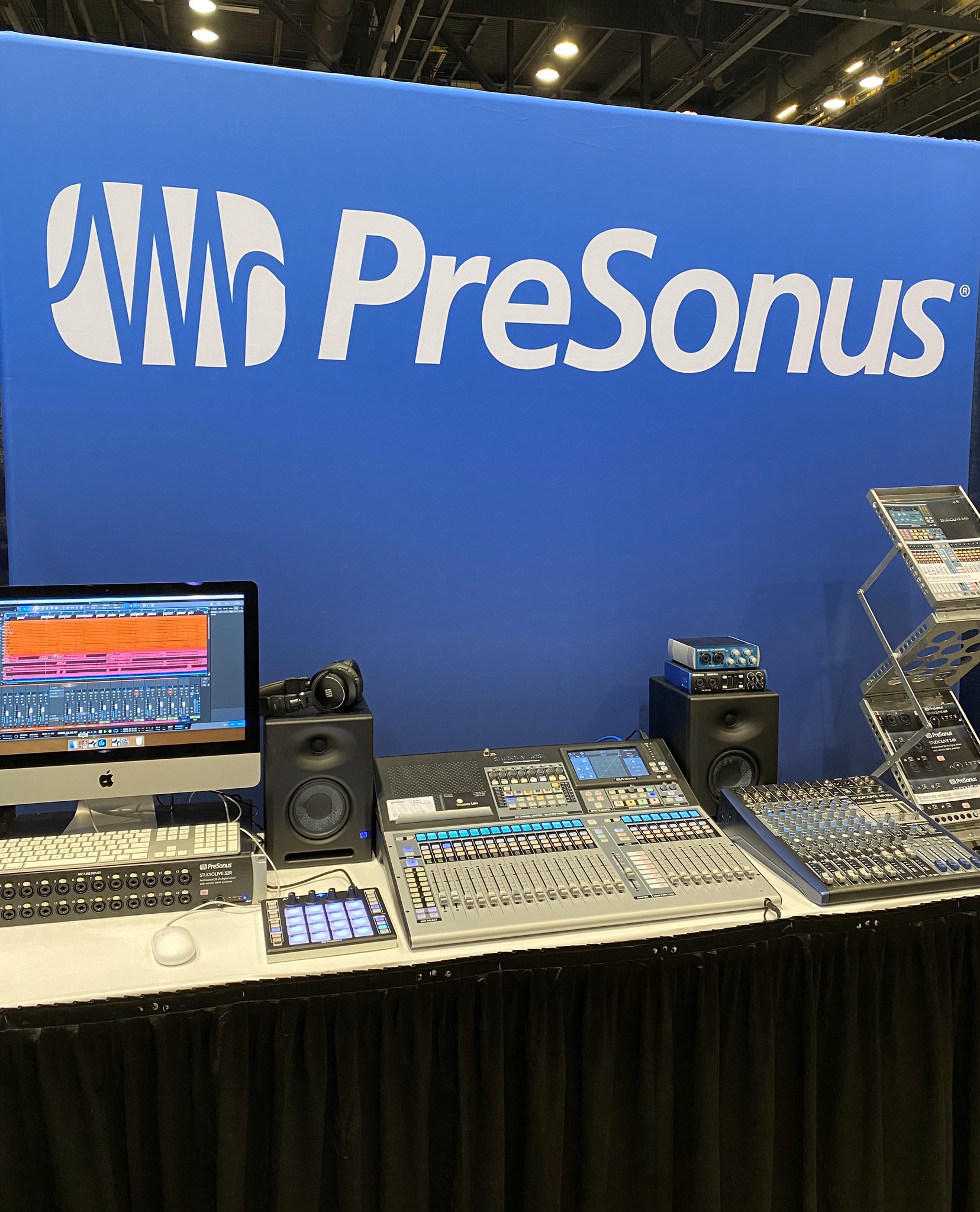
New at the show this year were the brand new StudioLive ARc Hybrid Mixers, showcasing new features and improvements from the past AR Series models. Studio One 4.6 was also on display, showing off the new redesigned Ampire extension, as well as showing the tight integration Studio One has with Notion! Other PreSonus Products on display and being demonstrated included the StudioLive 32SX Digital Mixing Console, StudioLive Series III Rack Mixers, NSB Stageboxes, Studio Series Audio Interfaces, AIR Loudspeakers, and ATOM Pad Controllers.
For More Information on PreSonus in the Music Education Space, Visit: edu.presonus.com
For More Information on The Midwest Clinic, visit: www.midwestclinic.org
PreSonus WorxAudio Loudspeakers a Revelation at St. Michael High School!
Nestled on 63 lush acres surrounded by protected wetlands, St. Michael the Archangel High School offers a traditional, comprehensive Catholic education to students in grades 9 through 12. The co-educational, college preparatory school started with one building and 130 students in 1984 and today comprises several buildings and a student body of more than 700. St. Michael’s music department, directed by Dr. Kevin Andry—widely known as “Doc”—recently moved into the school’s newest building. The new band room is spacious and well thought out but a very important feature was overlooked during the initial planning: AV.
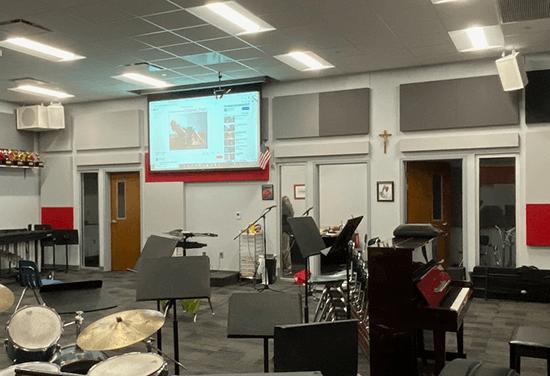
After receiving an initial quote for an AV system from an electrical contractor that was both inadequate to the program’s needs and a budget buster, Doc reached out to his contacts in the area, who pointed him to Covington, Louisiana, systems integrator Chuck Breaux of Assurance AV Solutions. “Doc told me that the upperclassmen, in particular, needed to do critical listening so if he plays an orchestra recording from the 1950s, they can pick out the cello playing a solo. The sound system in the old band room was a Frankenstein home-stereo system of mismatched speakers that definitely wasn’t working. Doc wanted the best system he could afford.”
After examining the new space, Breaux designed an impressive professional sound system based on a pair of PreSonus WorxAudio W-8A full-range point-source loudspeakers and a WorxAudio X115S subwoofer, driven by QSC PDL4.3 power amplifier. “The band room is a beautiful space,” describes Breaux. “It has high ceilings and they already had functional acoustical treatment on the walls. Doc has an office, and on each side of the office he has windows to the band room, like a recording studio. They have two isolation rooms where the kids can rehearse. I wanted to give Doc a sound system that was going to blow him away and be reliable.”
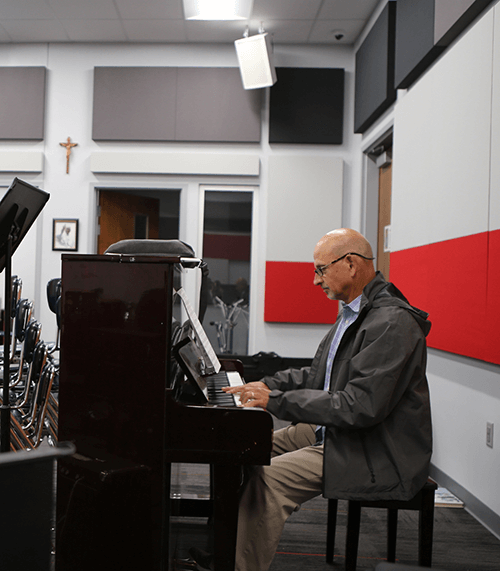
Breaux does a lot of installs with PreSonus ULT loudspeakers but he thought WorxAudio loudspeakers would better meet Dr. Andry’s needs. “I wanted something that was going to blow Doc away and would be reliable,” he declares. “We had to go into a different category, a higher-line box that would be transparent and brutally honest, so whatever goes in is going to come out. I’ve never heard a WorxAudio loudspeaker that masked the sound or manipulated it. The two W-8As and the X115S were the best loudspeakers we could offer him and stay within his budget.”
Although Breaux considered powered speakers, that would have meant hiring an electrician to run power in the ceiling and installing a power sequencer to remote power the system up and down. “The PreSonus WorxAudio W-8As are passive, so we just had to pull analog cables, which kept the cost down, and we could use a local amplifier to make it easy to power it up and down,” he points out.
Breaux and Andry agreed that the W-8A loudspeakers and the X115S subwoofer should be permanently flown. “This way the speakers don’t take up floor space, nobody is going to try to take them out to the football field, and there’s less chance for the students to plug and unplug them,” Breaux observes. “But we decided to make the front end of the system portable, so I got them a Gator G-TOUR road console rack for the power amplifier.”
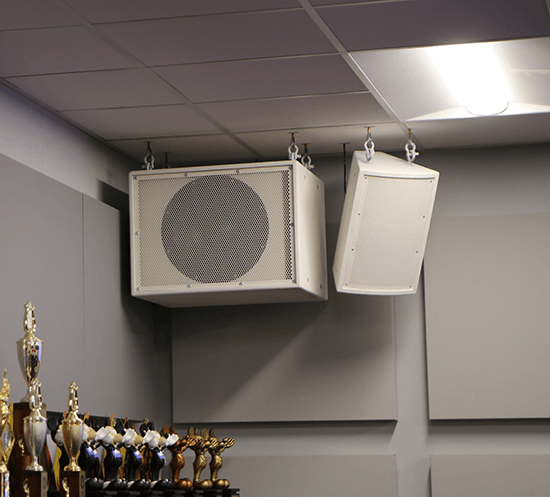
Also in the rack is a PreSonus StudioLive 16 Series III digital console mixer, which provides mixing, processing, and recording capabilities. “Doc is familiar with PreSonus Studio One 4 Professional recording software and wanted to be able to record the band,” Breaux relates. “He also wanted to record rehearsal so that if somebody wanted to rehearse a part, they could go into one of the two isolation rooms and practice with the recording.”
The StudioLive 16 is currently doing light duty work while Doc learns the technology. Breaux assigned one of his team who uses PreSonus mixers to set up mixer presets for recording and playback and help set up Studio One Professional on Dr. Andry’s laptop. The laptop networks with the mixer using AVB Ethernet, and the mixer sends analog audio to the power amp and speakers.
Most recording is done with a pair of ceiling-mounted condenser mics and a dynamic mic for a vocalist. “The jazz ensemble has lead singers, so they are not only using the PreSonus WorxAudio system for critical listening and recording but to hear the vocals during rehearsals,” notes Breaux. Breaux also set the school up with two large-diaphragm condenser mics for mobile use where needed. Andry uses a lot of video, so two mixer channels accommodate video soundtracks streaming from his laptop.
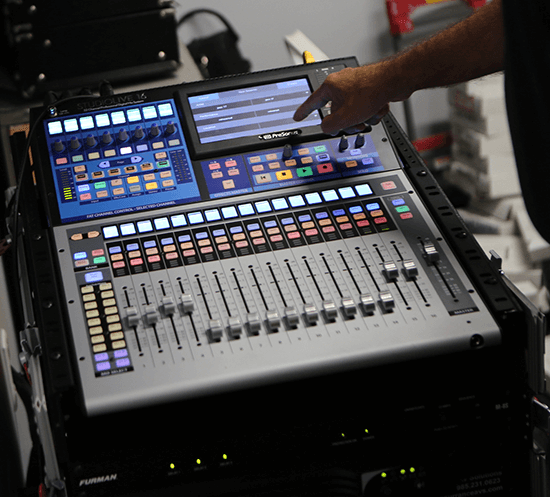
The new PreSonus sound system now is in full use, reports Breaux. “Doc loves the system. He is slowly learning to use the digital mixer, and he is extremely happy with how the project turned out. He’s thoroughly impressed with how good the WorxAudio system sounds; he is hearing things he never heard before. Compared to his old system, he went from a Pinto to a Ferrari.”
For More Information on PreSonus WorxAudio Solutions, visit: commercial.presonus.com
Guest Blog: On Recording The Music Of Children, by Chris Lott
Friend of PreSonus, Christopher Lott, joins us on the blog this week to share some of what he’s learned and discovered in his career! Let’s check out what Chris has to say!
ON RECORDING THE MUSIC OF CHILDREN
By Christopher Lott
Every child is capable of making brilliant, disarming music. If a child is crafting the material, you can bet their songs will be unorthodox and singular creations. On first listen, their music might sound overwhelming, dense, abstract, even avant-garde! The lyrics are often zany and poetic, full of non-sequiturs. One moment might be miraculously melodious, and the next might explode with thorny note clusters, operating outside any “accepted” musical rules of tonality or rhythm. But if you open your ears enough to hear their music, it might just halt your heart.
As musicians, we know that the music reflects the artist’s consciousness. In music, one’s feelings and emotions can’t be hidden, they rise to the surface. Songs are the transcript of our unfiltered hearts in time. And whether it’s a pre-pubescent ode to deodorant (“The Deodorant Song”), a song-suite based on a video game storyline (“’Til Six Am”), or a student rapping the contents of their dream from the night before (“Shark Dream Rap”, these students are expressing how the world feels to them. The complex and stunning music of children is the reflection of their active creative minds: limitless, absorbent and open to surprise.
I have the extreme pleasure of being a music teacher at CHILD, Children’s Institute for Learning Differences in Renton, WA, just outside of Seattle, where I’m cultivating a music program with PreSonus gear. Our students are a unique population – all of them have behavior challenges which has lead them to live much harder lives than most of us can imagine. Some have been expelled from every school they’ve gone to, others lack the social skills to make friends. Many of our students are autistic, non-verbal or have self-confidence issues, anxiety, or lack the emotional regulation skills that make it difficult to function in their public school districts. Our school focuses on helping students connect with their social and emotional centers so they can get back into their public schools and live productive, fulfilling lives.
I find that these students have so much to say, because they’ve experienced so much. They have oceans of thoughts simmering under the surface and are hungry to express their singular worldview. My job is to encourage these students to express themselves through the art of sound.
At CHILD, students learn basic music skills, apply those to their own compositions and then record their music. We are basically a record label, a factory of production, where the output is focused on the student’s art. My hope for them as a music teacher is that they learn to trust their creative intuition, increase their awareness and have them grow a relationship with music that will last a lifetime. I help them transmutate their sonic curiosity and sensory wonder into audio art and act as musical partner in the roller-coaster ride!
PreSonus gear plays a huge part in our creative process. I’ve been using PreSonus since the very first time I’ve ever recorded anything, back in my early twenties recording professionally and haven’t stopped since. I have PreSonus gear in my personal studio for my band, Wall of Ears, and in my work studio at CHILD. I trust PreSonus because not only does the gear sound delicious but it is reliable, affordable and durable.
The ease of Studio One allows students to learn how to act as engineers and producers, recording their own and other student’s material. The students get giddy over overdubs on their sonic experiments, splicing audio to make it seamless, grinning when they hear their voices close mic’d through the headphones. The FaderPort Controller allows them to easily navigate their own sessions with its simple interface and large buttons, great for visual learners. PreSonus’ Education Team is responsive and helpful and works well with our students to create an amazing setting.
I enjoy asking my students about their musical choices. In a very “free” instrumental coda section from the song “’Til Six Am”, the musician plays a keyboard riff that speeds up over time, building tension, similar to the Jaws theme song. When I asked about the origins of the accelerating melody, he informed me that the notes represent footsteps running up a creaky staircase which leads to an explosive “jump scare” of animatronic teddy bears. He was using melody to create a mimetic soundscape!
In order to assist in the music making process, I need to find out what are their musical interests and meet them where they are at. Do they gravitate towards video game music and playing with different synthesizer sounds? Do they prefer to improvise or create something more structured? What genres do they listen to? I often find myself in the role of enthusiastic producer. If they lean towards hip hop, I’ll start making a beat with them and use multiple takes of rapping to shape a song until the main concept emerges. An example is “I Need You,” where a student is ripping on subjects as wide-ranging as not chewing bubble gum in class to being an astronaut in space.
I find many students to be songbirds, even those with no previous musical training, with melodies and lyrics flossing through their opens brains like wild rivers. I have several natural lead singers, just waiting their whole lives for their backing band. Once the music is playing and they are in front of a microphone, the vocals flow effortlessly. I’ve seen a non-verbal student, normally unable to function more than ten seconds in a conversation, spew vocals over a whole song. It’s amazing to witness the power of music on a daily basis.
In the studio, I’ll set up some vocals mics and we’ll bounce ideas back and forth, until a skeletal foundation for the song exists. I follow their lead, using a guitar or a keyboard to help lay down some progressions or riffs or harmony, to help them achieve their vision. Often times, a song can be created start to finish in one thirty minute session. “Fight Song 2: You’re Extreme” is an example of a song written in one sitting, although it may sound labored over. It’s an extremely poetic punk rock anthem done in two spliced improvised takes with vocal swagger that evokes The Clash. By the time I had figured out a simple chord progression, the student was ready to roll.
As a music teacher, it is all a matter of helping the students find out how to be open to the voice inside. PreSonus makes it easier.
* Please find the CHILD Tapes Vol. 1 Playlist featuring several of the songs created by my students and mentioned in this article. Students’ names have been removed to preserve anonymity. Go ahead and listen to the magic for yourself!
Studio One Prime with Gregor!
Check it out! Gregor’s got a new series of videos for new users of Studio One Prime. He covers everything from installation and setup to basic beatmaking, and even time-stretching and working with Ableton Live.
More to come from Gregor soon!
Want to make some music? Get started with Studio One Prime here.
30 Days of FREE Obedia Training for new AudioBox customers!
 Good news: buy an AudioBox after Aug. 1, 2019, and you’ll get 30 days of OBEDIA support… FREE!
Good news: buy an AudioBox after Aug. 1, 2019, and you’ll get 30 days of OBEDIA support… FREE!
OBEDIA, the leading source of live training and support for pro audio software and hardware, wants to help get new users up and running as fast as possible! Buy an AudioBox interface after August 1, 2019, and while supplies last, you’ll receive 30 days of free OBEDIA phone or remote desktop support for Studio One (a $29.90 value).
Simply register your new AudioBox at my.presonus.com, receive a promo code for OBEDIA with instructions for how to redeem, and join the celebration for OBEDIA’s 15th Anniversary.
Qualifying products include:
- AudioBox USB
- AudioBox USB 96
- AudioBox iOne
- AudioBox iTwo
- Any AudioBox bundles that include any the above products